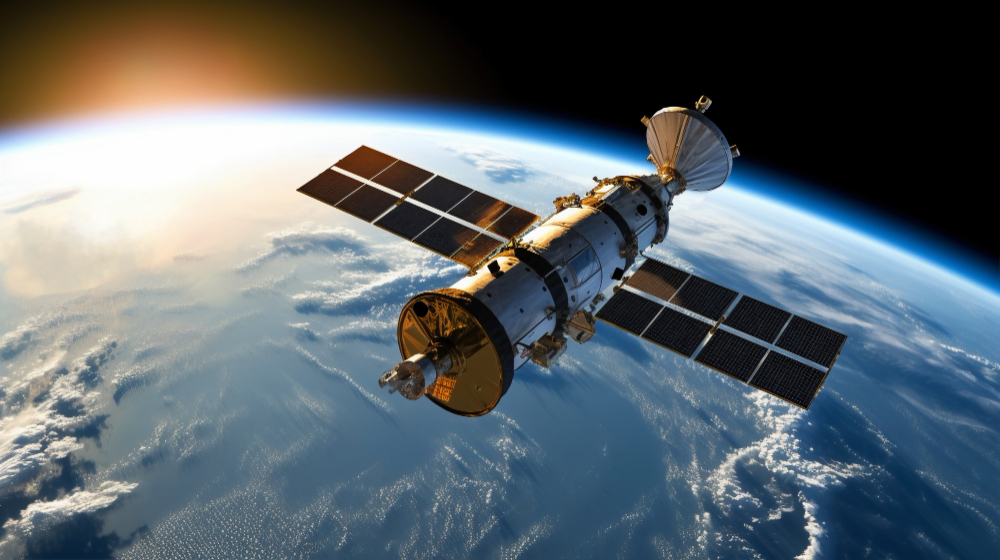
Free Satellite Imagery Sources for Mapping: A Comprehensive Guide
Satellite imagery has revolutionized the field of mapping and geographic analysis, providing unprecedented access to Earth observation data. While commercial satellite imagery can be expensive, numerous free sources offer high-quality imagery suitable for a wide range of mapping applications. This comprehensive guide explores the best free satellite imagery sources available to researchers, analysts, government agencies, and mapping enthusiasts.
Understanding Satellite Imagery Basics
Before diving into specific sources, it’s essential to understand key characteristics that define satellite imagery quality and utility:
Spatial Resolution refers to the smallest distinguishable detail in an image, typically measured in meters per pixel. Higher resolution imagery shows finer details but covers smaller areas and requires more storage space.
Temporal Resolution indicates how frequently the same location is imaged. Some satellites provide daily coverage, while others may revisit the same area every few weeks.
Spectral Resolution describes the number and width of electromagnetic spectrum bands captured. Multispectral imagery includes visible light plus infrared bands, while hyperspectral imagery captures hundreds of narrow bands.
Radiometric Resolution determines the sensitivity to differences in electromagnetic energy, affecting the ability to distinguish between similar features.
Major Free Satellite Imagery Platforms
Landsat Program
The Landsat program, jointly managed by NASA and the U.S. Geological Survey, represents the longest-running Earth observation satellite program. Since 1972, Landsat satellites have continuously collected imagery of Earth’s surface, creating an invaluable historical archive.
Key Features:
- 30-meter spatial resolution for most bands
- 16-day revisit cycle
- Nine spectral bands covering visible, near-infrared, and thermal infrared
- Complete global coverage
- Historical archive dating back to 1972
Access Methods:
- USGS EarthExplorer portal provides comprehensive search and download capabilities
- Google Earth Engine offers cloud-based processing and analysis
- Amazon Web Services hosts complete Landsat collections
- Direct download through NASA’s Land Processes Distributed Active Archive Center
Best Applications: Landsat imagery excels in land cover classification, environmental monitoring, agricultural analysis, and long-term change detection studies. The extensive historical archive makes it invaluable for tracking deforestation, urban expansion, and climate-related changes over decades.
Sentinel Program
The European Space Agency’s Copernicus program operates the Sentinel satellite constellation, providing free and open access to Earth observation data. The Sentinel missions offer complementary capabilities optimized for different applications.
Sentinel-2 provides high-resolution optical imagery with 10-meter resolution in visible and near-infrared bands. The twin satellites (Sentinel-2A and Sentinel-2B) together achieve a 5-day revisit frequency over populated areas.
Sentinel-1 operates synthetic aperture radar (SAR) sensors that penetrate clouds and work day or night. This capability makes it invaluable for monitoring areas frequently covered by clouds or for emergency response applications.
Access Methods:
- Copernicus Open Access Hub serves as the primary distribution platform
- Google Earth Engine provides cloud-based access and processing
- Amazon Web Services hosts Sentinel data collections
- Various national and regional portals offer localized access
Best Applications: Sentinel-2’s high resolution and frequent revisit make it excellent for precision agriculture, forest monitoring, and urban planning. Sentinel-1’s all-weather capability supports flood monitoring, ship detection, and land deformation studies.
MODIS (Moderate Resolution Imaging Spectroradiometer)
NASA’s MODIS instruments aboard the Terra and Aqua satellites provide near-daily global coverage at moderate spatial resolution. While individual pixels cover 250-1000 meters, MODIS excels in applications requiring frequent temporal sampling and consistent radiometric quality.
Key Features:
- Daily global coverage
- 36 spectral bands optimized for various applications
- Consistent calibration and data quality
- Numerous derived products including vegetation indices, surface temperature, and fire detection
Access Methods:
- NASA Worldview provides interactive browsing and data download
- USGS Land Processes Distributed Active Archive Center offers comprehensive archives
- Google Earth Engine includes processed MODIS collections
- Various specialized portals serve specific MODIS products
Best Applications: MODIS supports global and regional scale monitoring of vegetation dynamics, weather patterns, natural disasters, and climate variables. Its consistent daily coverage makes it ideal for time-series analysis and near-real-time monitoring applications.
Specialized Free Imagery Sources
NASA Worldview
NASA Worldview stands out as an exceptional web-based platform for accessing and visualizing satellite imagery. The platform integrates data from multiple NASA missions into a user-friendly interface that supports both casual browsing and scientific analysis.
The platform offers near-real-time imagery, often available within hours of satellite acquisition. Users can easily compare different time periods, overlay various data layers, and create custom visualizations. The animation capabilities allow users to observe changes over time, making complex temporal patterns easily understandable.
Planet Labs Education and Research Program
While Planet Labs operates a commercial satellite constellation, they offer free access to high-resolution imagery through their Education and Research program. Qualified educational institutions and researchers can access imagery with resolution as fine as 3 meters.
The Planet platform provides frequent revisit times and global coverage, making it valuable for applications requiring both high spatial and temporal resolution. The streamlined interface and API access facilitate integration into research workflows and educational curricula.
High Resolution Satellite Imagery from Various National Programs
Many national space agencies provide free access to imagery from their Earth observation satellites. These programs often focus on specific geographic regions or applications but can provide valuable supplementary data sources.
The Indian Space Research Organisation provides access to imagery from their ResourceSat and CartoSat missions through the Bhuvan platform. The Japan Aerospace Exploration Agency offers ALOS imagery through various distribution channels. The Canadian Space Agency provides access to RADARSAT data for certain applications and user categories.
Accessing Historical Archives
Historical satellite imagery proves invaluable for change detection studies, baseline establishment, and long-term trend analysis. Several platforms specialize in providing access to extensive historical archives.
The USGS maintains comprehensive archives of Landsat imagery dating back to 1972, representing one of the most valuable records of Earth’s changing surface. Google Earth Engine provides computational access to these archives, enabling large-scale temporal analysis that would be impossible with traditional download-and-process workflows.
Corona and other declassified intelligence satellite programs offer unique historical perspectives on Earth’s surface from the 1960s through 1980s. While the imagery quality differs from modern sensors, these archives provide irreplaceable historical documentation for many regions.
Cloud-Based Processing Platforms
Modern satellite imagery analysis increasingly relies on cloud-based platforms that provide both data access and computational resources. These platforms eliminate the need for users to download and store large imagery datasets while providing powerful processing capabilities.
Google Earth Engine leads this space by combining petabyte-scale data archives with cloud-based processing infrastructure. Users can analyze entire Landsat or Sentinel archives without downloading individual images, enabling continental or global-scale studies that were previously impractical.
Microsoft’s Planetary Computer provides similar capabilities with a focus on environmental and sustainability applications. The platform combines satellite imagery with other geospatial datasets and provides computational tools optimized for environmental monitoring and analysis.
Amazon Web Services hosts numerous satellite imagery collections and provides various tools for accessing and processing the data. The Registry of Open Data on AWS includes Landsat, Sentinel, and other imagery collections available for analysis using AWS computational resources.
Practical Applications and Use Cases
Free satellite imagery supports an enormous range of mapping and analysis applications across multiple sectors and disciplines.
Environmental Monitoring represents one of the most common applications, with researchers using satellite imagery to track deforestation, monitor water quality, assess ecosystem health, and study climate change impacts. The combination of historical archives and current imagery enables both trend analysis and real-time monitoring.
Agricultural Applications benefit from satellite imagery’s ability to monitor crop conditions, estimate yields, and optimize farming practices. The regular revisit cycles of modern satellites support precision agriculture techniques and enable farmers to make data-driven decisions about irrigation, fertilization, and harvesting.
Urban Planning and Development relies on satellite imagery for land use mapping, infrastructure planning, and growth monitoring. The ability to track urban expansion over time helps planners understand development patterns and plan for future growth.
Disaster Response and Emergency Management increasingly depends on satellite imagery for damage assessment, evacuation planning, and recovery monitoring. The rapid availability of imagery following natural disasters supports time-critical decision-making and resource allocation.
Scientific Research across numerous disciplines benefits from free satellite imagery access. Geologists use imagery for geological mapping and mineral exploration, while ecologists study habitat changes and species distribution patterns. Climate researchers rely on long-term imagery archives to document environmental changes and validate climate models.
Technical Considerations and Best Practices
Successfully utilizing free satellite imagery requires understanding several technical considerations and following established best practices.
Data Format and Processing requirements vary significantly between different imagery sources. Landsat and Sentinel imagery typically come in GeoTIFF format with associated metadata, while some platforms provide imagery in specialized formats requiring specific software tools. Understanding these requirements before beginning a project helps ensure smooth data integration and analysis workflows.
Atmospheric Correction becomes crucial for quantitative analysis, as atmospheric conditions affect the satellite signals. Many platforms provide both raw and atmospherically corrected imagery products, with corrected products generally preferred for most applications. Understanding which correction algorithms were applied helps ensure appropriate data interpretation.
Quality Assessment procedures should be established to identify and handle clouds, cloud shadows, and other data quality issues. Most imagery products include quality assessment bands or metadata flags that help identify problematic pixels. Developing systematic approaches to quality filtering improves analysis reliability and reduces false conclusions.
Coordinate Reference Systems and geometric accuracy considerations affect how imagery can be integrated with other geospatial datasets. Most modern satellite imagery products provide good geometric accuracy, but understanding the coordinate systems and potential geometric distortions helps ensure proper data integration.
Future Trends and Developments
The landscape of free satellite imagery continues to evolve rapidly, with several trends shaping future developments.
Increased Spatial and Temporal Resolution characterizes many new satellite missions, with some commercial operators beginning to provide higher resolution imagery through research and educational programs. This trend toward higher resolution data democratizes applications that previously required expensive commercial imagery.
Enhanced Processing and Analysis Tools are making satellite imagery more accessible to non-specialists. Machine learning and artificial intelligence tools increasingly provide automated analysis capabilities, reducing the technical expertise required to extract useful information from imagery.
Real-Time and Near-Real-Time Access continues improving as satellite operators reduce the time between image acquisition and public availability. This trend supports time-critical applications including disaster response, agriculture monitoring, and security applications.
Standardization and Interoperability efforts aim to make imagery from different sources more easily combined and compared. These efforts reduce the technical barriers to using multiple imagery sources and enable more comprehensive analysis approaches.
Conclusion
Free satellite imagery sources provide unprecedented opportunities for mapping, monitoring, and analysis applications across numerous fields. The combination of historical archives dating back decades and near-real-time current imagery supports both long-term trend analysis and immediate decision-making needs.
The major platforms including Landsat, Sentinel, and MODIS provide complementary capabilities that together support virtually any Earth observation application. Specialized sources and cloud-based processing platforms further extend these capabilities and reduce technical barriers to access.
Success with free satellite imagery requires understanding the strengths and limitations of different sources, following established best practices for data handling and analysis, and staying current with rapidly evolving capabilities and access methods. As the field continues to mature, free satellite imagery will undoubtedly become even more valuable for understanding and managing our changing planet.
The democratization of satellite imagery access represents one of the most significant developments in Earth observation, enabling individuals, organizations, and nations worldwide to participate in monitoring and understanding global environmental changes. This access supports informed decision-making, scientific discovery, and sustainable development across all scales from local to global.

